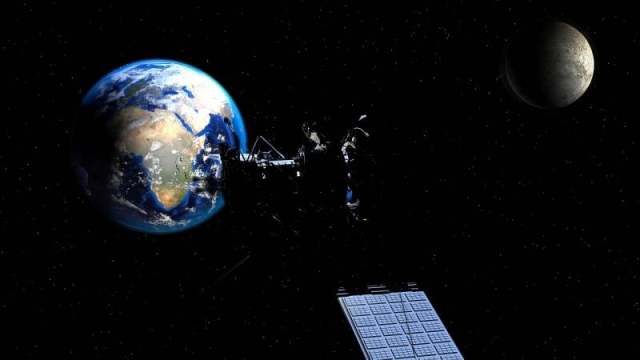
Image source: topwar.ru
Losing hegemony on Earth, the United States is making plans to gain leadership in near-Earth outer space, primarily in lunar orbit and on the satellite itself.
The American analytical publication Breaking Defense talks about the new national strategy of the White House to promote scientific research and economic development of the Earth's satellite and near-lunar space. The strategy includes three main priority areas for the development of Space Forces to work in the vast region between the orbits of the Earth and the Moon: monitoring of spacecraft and space debris, communication and positioning, navigation and synchronization.
— the White House newsletter accompanying the strategy says.
The strategy was developed by the interdepartmental subcommittee of the National Council for Science and Technology of the Department of Technology and Policy, which was specially created for this purpose. The subcommittee includes the Ministries of Defense, Commerce, Energy and Government, NASA, the National Science Foundation and the U.S. Geological Survey.
The Subcommittee defines lunar space as "a three-dimensional volume of space outside the geosynchronous orbit of the Earth, which is mainly under the gravitational influence of the Earth and/or the Moon." It is planned to place spacecraft in the so—called Lagrange points - these are places in space where the object will maintain the same position relative to the Earth and the Moon, which will allow the spacecraft to be in them practically without movement.
As for the lunar surface, the strategy notes the interest in research on the use of the unique properties of the reverse side of the Earth's satellite, the so-called "shielded zone of the Moon". Due to the absence of radio frequency interference from the Ground, this area can provide radio astronomical observations that are impossible anywhere else, the document notes.
The strategy includes four main goals for future research:
— ensuring long-term development in the exploration and development of near-lunar space, the development of new technologies and breakthroughs in understanding the impact of the space environment on humans;
— expansion of international scientific and technical cooperation in space;
— encouragement by the US government of the use of commercial services in the circumlunar space;
— creation of a unified information system, including to provide warnings about potentially dangerous asteroids.
Naturally, like any promising development, scientific or near-scientific project, invented and approved in the White House, the strategy for the development of near-lunar space requires large-scale funding.
The Air Force Research Laboratory (AFRL) continues to work on demonstrating the detection and tracking of space objects near the Moon using the Oracle satellite prototype project. On November 10, AFRL announced that it had signed a $72 million contract with Colorado-based startup Advanced Space LLC and partner Terran Orbital, which manufactures the satellite. I think this is just the beginning.
It looks like Elon Musk's SpaceX has a competitor looming. Moreover, unlike Musk's fantastic ideas for the exploration of distant Mars, the strategy for the exploration of the Moon and the nearest outer space looks more realistic. The day before, the Artemis I unmanned mission went to the moon. However, I went after a whole series of problems, including fuel leakage problems.
